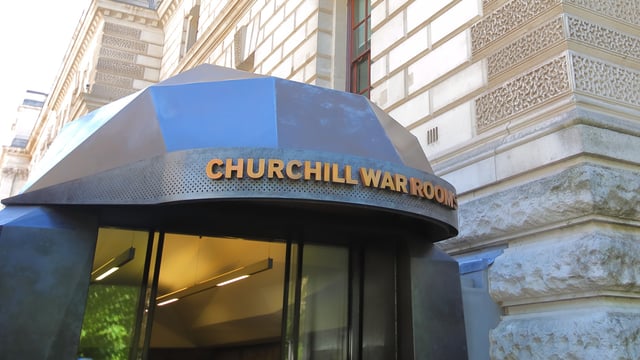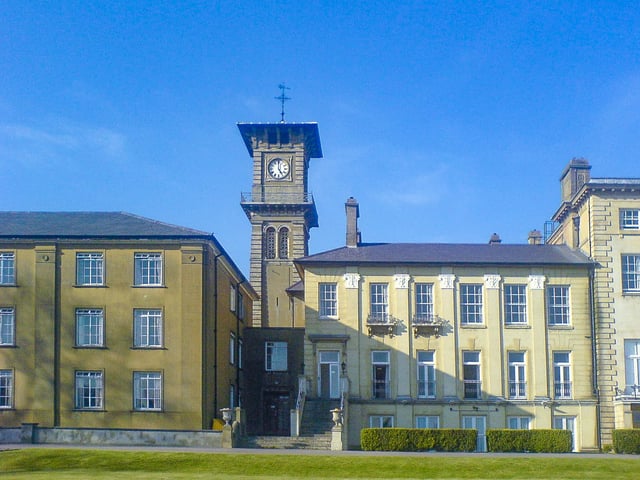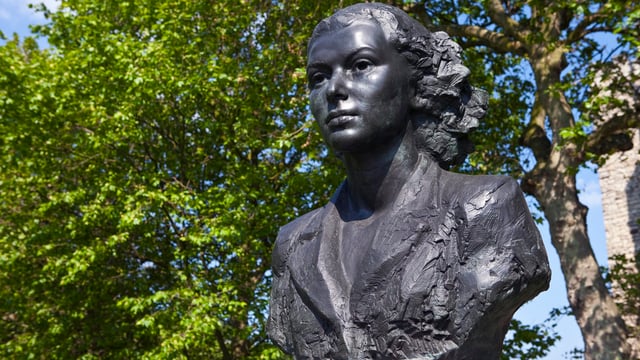World War II & the Holocaust In the UK
From abandoned villages on the south coast such as Tyneham and Imber, to Churchill’s War Rooms in London. From Bletchley Park in Buckinghamshire where Alan Turing and many others worked to crack the Enigma Code, to the Hyde Park Holocaust Memorial in London. There are many more sites, museums and places of memory and remembrance directly associated with World War Two in England than most people appreciate.

D-Day Sites in England
For many, D-Day is synonymous with northern France and the start of the Allies changing the tide of the war. What about where they left from? D-Day was months in the planning, all of which took place in the UK. Detailed military plans were made, and all of it had to be hidden from the enemy. The south of England was taken over in the preparation for D-Day, and traces of this have been left behind all over the country.
WWII Sites, Museums & Memorials
Churchill War Rooms
From the First World War the British government was concerned for its vulnerability in the event London suffered an aerial bombardment. In 1938 the basement of a building in Whitehall was renovated and equipped to provide an underground headquarters for the core of the British government. Hundred of men and women spent hours here directing the Second World War between 1940 and 1945. Combining archival photographs, film footage and oral histories five themes are covered in permanent displays in the Cabinet Room, the Map Room and Churchill’s bedroom.

Hughendon Manor, Benjamin Disraeli's Home
A Victorian redbrick manor house, Disraeli’s country residence is set in the Chilterns of Buckinghamshire. Now run by the National Trust, the rooms and displays off an insight into the flamboyant and colourful personality of Victoria’s favourite Prime Minster. The house is decorated as it might have been at the time it was occupied by Disraeli and contains a collection of memorabilia including family portraits, Disraeli’s furnishings, a library with Disraeli’s novels and one written and signed by Queen Victoria. Also open are rooms in the west wing that housed the Hillside operation. In these exhibits reveal the story of the top secret map-making facility that operated here in WWII.

Lepe Beach
The beach near the village of Lepe is where the Mulberry Harbours were made and launched. These were critical to the success of the invasion, a deep water harbour which protected supply ships and provided facilities and equipment. Hundreds of troops, vehicles and ammunitions were hidden in the wooded area and narrow roads around Lepe. PLUTO, the pipeline that transported fuel to France for use in the invasion, left the mainland here. The area is now a sandy beach with cliffs covered in pine trees and wildflowers. Many remnants from D-Day preparations can be seen along the beach, such as construction platforms, sand hardening mats, slipways and gun emplacements.


RAF Bentley Priory
An 18th century stately home became a non-flying RAF base in 1926 and retained until 2008 when it the land was sold for housing. What was the Officer’s Mess has been turned into a museum that focuses on the Battle of Britain. RAF Bentley Priory was the headquarters of Fighter Command during WWII, in particular for the Battle of Britain in 1940. The base was also used as a location to plan the airborne D-Day landings. It was here in an underground bunker, the remains of which can be visited, that Churchill, Eisenhower and King George VI spent D-Day as the events in France unfolded.


SOE Agents Memorial, Lambeth Road
Unveiled on 4th October 2009 by the Duke of Wellington is a memorial to the Special Operations Executive Agents, those who survived, and those who did not, their missions during World War II. The SEO was a secret organisation of men and women who performed their covert duties behind enemy lines during World War II. Some 13,000 people worked for the Executive, of which about 3,200 were women. The bust on this, one of a few memorials to the SEO, monument is that of Violette Szabo. The bronze bust is the work of the artist Karen Newman.








